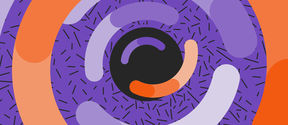Send it up, up and away? Maybe not, space junk is a problem!

It’s a lesson that most of us learn as kids: you can pull out your toys to play but when you’re done, you’ve got to put them away. Of course, in the midst of fun, this simple rule isn’t always so easy to remember. Until you step on a Lego.
When it comes to space adventures, we’re now getting a painful reminder that there’s a mess on the living room floor. For years the satellites—and essentially anything launched beyond the clouds—have been sent up without much thought to what happens once they lose their usefulness. The result? More than 18,000 pieces of human-made objects bigger than Lego blocks now circle our planet. Only around 1500 are functional satellites; the rest is just junk.
So what do we do with the stuff left floating in space?
Space is a highway
In many ways, space debris is a practical problem. If we put something up there, we just need to bring it down. Jaan Praks, Assistant Professor at Aalto University, explains:
‘Let’s compare space to a highway. We can drive fast there and it has great value. That being said, if we start leaving used vehicles on the road, it becomes a problem for us and others who want to drive by.’

Space junk means clogged routes and a growing risk of collision for our satellites and our space journeys.
The issue itself is simple; we need to clean up our mess. What’s complicated is making global rules. There’s a growing number of countries, companies and individuals looking to join the space business and harness the vast potential space highway can provide. Unfortunately, not everybody takes cleaning seriously.
Traffic alert: the next years will be busy
The number of satellites launched into space yearly has already grown and the number is only expected to jump dramatically in coming years: about 400 have been sent up this year and up to 1000 are anticipated by 2022. All these satellites are needed to give information on our changing planet, provide communication across vast distances for increasing numbers of people and devices, and help navigate our cars and airplanes.
Jaan Praks, Assistant ProfessorMore infrastructure in space means better services.
‘More infrastructure in space means better services: we’ll be able to access the internet anywhere, even in the middle of the ocean. We’ll be able to better manage resources, because we’ll have an up-to-date overview of what’s happening on the ground,’ says Jaan.
For researchers, it means more data and better solutions; for industry, it means new business opportunities.
‘We’re going to see more reasons to go to space and one day we’ll visit other planets.'
Clearing the way
One thing is clear, says Jaan. If cleaning up your mess isn’t made mandatory, it won’t happen. Global oversight is needed to make sure our paths to space remain clear of debris.
Yet the real cincher may be technology—there still isn’t any good way of catching fast moving junk. With this in mind, Jaan and a team of other Finnish researchers at the Centre of Excellence in Sustainable Space are working on a way to safely deorbit satellites. They aim to use an electric sail of sorts, highly charged, to bring a satellite down into the Earth’s atmosphere, where it should naturally burn up. If this sail endeavour succeeds, it will be the first experiment of its kind in space—an out-of-this-world test of concept.
And there’s no doubt that with more traffic expected and a vast array of abandoned junk already up there, tools like this could go far.
‘People are just starting to think about the concept of sustainable space,’ Jaan underlines. ‘Clean space is needed for our species' future. Space provides opportunities to master planet-wide problems and make great discoveries. But we need to be responsible now.’
More from our Way Out There series

Black holes might be nicer than we think
They’re giant, destructive vacuums with the power to rip stars apart, yet evidence points to the helpful role black holes also play as galaxies form.
Send it up, up and away? Maybe not, space junk is a problem!
Clearing up the world’s space junk can pave the way for better mobile infrastructure and other ways to move into space
Secrets of our universe live in a big blue cylinder
There isn’t much on Earth but you can find it just about everywhere else — how a type of helium might tell us how everything we know got its start.
Dim light from far-away galaxies deserves a second look
Radio waves are being picked up from galaxies long considered to be silent. What’s up?Read more news

Your voice gives away valuable personal information, so how do you keep that data safe?
With speech technologies becoming increasingly common, researchers want to make sure we don’t give away more information than we mean to.
Aalto in 2025: Quantum leaps, creative breakthroughs and solutions for a better life
Growth, technology and industrial renewal; human-centred solutions; health and everyday wellbeing; and enjoyable daily life and thriving communities.
Research Council of Finland establishes a Center of Excellence in Quantum Materials
The Centre, called QMAT, creates new materials to power the quantum technology of coming decades.






